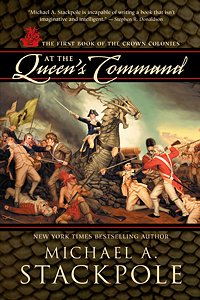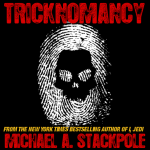Publishing: Coughing Up Blood
Publishing is dying—publishing as we know it anyway. In the past couple of days I’ve tried to show how dysfunctional traditional publishing is with its accounting practices. Traditional publishing has always lagged behind the technology curve, and as the rate of technological change accelerates, there’s little or no chance of traditional publishers ever getting caught up. That ship has sailed, their business model is dying, and they don’t have a clue as to what to do about it.
Starting two years ago, the heads of many of the major publishing houses issued statements that ran along this line, “Over the next five years we expect electronic publishing to become a bigger part of our business.” They pointed to industry generated statistics—none of which encompassed the burgeoning self-publishing business—to justify their having five year to deal with ebooks. This is akin to a farmer saying, “75% of my tomatoes go to making ketchup, so I have time to deal with this salsa thing…” when everyone and his brother is making their own salsa and selling it from stands at farmers’ markets. The farmer’s statistics are valid for him, they just don’t say anything useful about the industry at large.
I’d love to say that publishing CEOs, lacking psychic powers as they do, could not have been expected to see how things would move so fast—but that kind of vision doesn’t require psychic powers. Borders was in serious trouble eighteen months before they filled for bankruptcy protection. Print book sales had been dropping for decades. Amazon had eaten into retail book sales, and then delivered the Kindle. This further eroded print sales and opened the door to authors selling their work directly at bargain prices—and this during one of the worst economic times in American history, right when consumers needed a break. When Barnes & Noble released the Nook, training employees to sell it (and paying them extra to sell it); and when Amazon and Apple managed to turn every smartphone in the world into ebook readers, the handwriting was on the wall—in big bloody letters.
The fact that I was the first author to offer ebooks through Apple’s Appstore, and that I managed to be selling those books six months before Random House, the world’s largest commercial publisher, could get a book out, points to traditional publishing’s lack of flexibility and vision. They should have been there before me. When they weren’t, they should have turned around, bought me, bought the technology, and moved into a leadership position. They did not. Traditional publishers were content to sit back and wait to see how “things will shake out.”
Whereas other authors and I were the ones who did the shaking.
So, this is how things have shaken out.
Michael Shatzkin, a book industry analyst, pointed out that the current publishing business model collapse would come when ebook sales accounted for 20-25% of a new book’s sales. His thinking ran thusly: at that point print orders would shrink such that each individual unit would cost more. This would force publishers to raise book prices, which would encourage more readers to purchase ebooks, which can be sold at a lower price. You can see the nasty sort of cycle this would be. He posited this tipping point could come in December of 2012. I looked at his same numbers, factored in the rising tide of authors selling their own material, and pegged the collapse at June, 2012.
What the both of us missed was what the collapse of Borders and B&N’s emphasis on pushing the Nook would result in. In February, in a call to stock analysts, B&N reported that they expected print sales to continue to fall, but that at the end of 2010, they had hit their ebook sales projections for 2014. This put them four years ahead of where they thought they’d be.
In effect, the five years that publishers gave themselves in 2009, vanished by the end of 2010.
The collapse of Borders further exacerbated the problem. First, Borders has been dumping their stock of books at high discounts, which kills sales in all other bookstores. Second, they are closing a significant number of outlets. B&N has also been closing outlets. What this means, rather obviously, is that bookstore linear footage for selling books is shrinking rapidly. If stores do not have the shelves on which to stock books, they will not order as many books. This is squeezing the print side of the Shatzkin equation very hard. Shorter runs will mean higher prices, and the difficulty of finding print books is going to continue to drive shoppers online and to ebooks.
In predicting a collapse in June of 2012, I may have been wildly over-optimistic. The print industry might get one last go with the 2011 holiday season, but after that, things are going to look very grim.
Traditional publishing continues to fight a rearguard action. They are aggressively asserting that they own ebook rights on all titles they publish, whether or not the contracts grant them ebook rights. They continue to use the practice of windowing—delaying the release of a lower-priced ebook edition of a new release—to shore up sales of print books. They refuse to offer new products which ebook technology allows them to offer. In the case of my DragonCrown War books, not only do they not have the first two books available as ebooks, but they’ve also not done an omnibus edition. They could easily do an omnibus edition of the Age of Discovery books, too. (When I asked, one time, why such ebook omnibuses were not being done, the answer that came back was, in essence, “We couldn’t do it as a print product, so we can’t do it as an ebook.”)
With all these pressures, what model will traditional publishing adopt to survive?
Not being a psychic, and not having been hired as a consultant, I am led to the following conclusion. I think that traditional publishing will move toward a pseudo-periodical model of publishing. This is to say that big bestsellers like Stephen King will always have print editions of their last dozen or so novels available. In fact, all of their novels will be available in print, though they will likely cycle in and out as covers are redesigned. Print-on-demand (or print while you wait) facilities may be used to supplement the print process in such cases. Everything else will have a short, initial run of paperbacks designed to fill two months worth of demand, then backlist sales will move as fast as possible to ebooks.
In the short term this is a boon to writers because the publishers will be divorcing themselves from having to warehouse vast numbers of books. New books will come in and go out inside two months (which is when they record most of their sales away). Publishers, just like periodical publishers, will constantly be looking for new content to fill the shelves, and the remaining bookstores will buy it to fill their shelves. If you need a book you missed in a series, you’ll go to the web and snag it electronically. If sales go strongly enough, it might be cycled in for a short reprint, when you can get a souvenir copy to put on your shelves at home.
The only problem with this model is this: individual writers can turn work out more quickly than traditional publishers. Back in the days of the pulp magazines, writers were turning out novels on a monthly basis with incredible regularity. The advent of computers hasn’t made writers any slower. And if given a choice between selling a book to a traditional publisher and making 17.5% of the cover price on ebook sales, or doing it myself and making 65-95%, I know the choice I’m making. The result will be that even authors who get trained to write fast and well in the new periodical system will eventually become a solo act. Thus traditional publishers will constantly be trying to find new talent and professionalizing it. This expense will keep prices on their ebooks higher than those being offered by individual authors, so they lose on the basis of price comparison.
The other option for traditional publishers is to become print-only houses. They scout for talent in the pool of self-published ebook authors—as they did in the case of Amanda Hocking—and turn out physical copies of their ebooks. It’s a viable plan, at least for a little while, until everyone who has an ebook reader is comfortable reading off a screen, at which time price bias kicks in again. Publishers opening up their own retail boutiques, with POD facilities in a back room, are a variant of this plan. It’s an attractive one, but pretty much became an evolutionary dead end when smartphones became ereaders. Why pay more to lug heavy stuff, when you can pay less and have it always available in your pocket?
I know, I know; this is all gloom and doom. Bibliophiles hate hearing this because we all love our books. We love the feel of them, and the smell, and curling up with them on a cold night, or shaking sand out of them at the beach. I’m right there with you. But everything I’ve outlined above doesn’t mean books are going away. I mean, face it, books existed before traditional publishing grew up, so there is no reason to suppose they won’t be around after it crashes and burns.
And tomorrow, I lay out the vision of a new future where we might have to split the notion of story apart from the package; but one where lovers of both will have plenty to cheer about.
Writing up this series of blog posts is cutting into my fiction writing time. If you’re finding these posts useful, and haven’t yet gotten yet snagged my latest novels, please consider purchasing a book. Nice thing about the new age of publishing is that you become a Patron of the Arts, letting writers know what you’d like to see more of simply by voting with a credit card. (Authors charge less when they sell direct, so you save, we make more, and that frees us to write more.)
 My latest paper novel, At The Queen’s Command, is available at book retailers everywhere.
My latest paper novel, At The Queen’s Command, is available at book retailers everywhere.

Tricknomancy is a braided novel. That’s author for a serial story told through a number of shorter pieces that all come together as a novel. Think of it in terms of a television series. This is series one, consisting of seven episodes. The stories feature Trick Molloy, a magick-using, ex-cop who left the force because he was framed for being a dirty cop. He now works as a bouncer in a strip club, helping friends, solving murders and dealing with an insane family, most of whom would like to see him dead or worse. It’s available for the Kindle, and for sale directly off my website for any epub compliant ereaders



 14. Apr, 2011
14. Apr, 2011 








3 Responses to “Publishing: Coughing Up Blood”